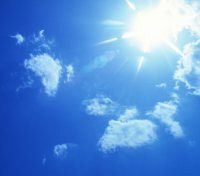

Researchers have found that the 'hole' in the ozone layer above Antarctica is beginning to heal. The study found that in September 2015, the hole was around 4 million square kilometres smaller than it was in 2000. To put it in perspective, that is roughly the size of India.
The ozone layer blocks harmful radiation from the Sun from reaching the Earth's surface. Without it, skin cancer, cataract damage and damage to the Earth's natural environment will occur.
However, in the 1980s, scientists discovered a thinning of ozone above Antarctica, and most of the damage was being done by chlorine in CFCs, which were found in many common products at the time such as hairsprays, fridges and air conditioning units. CFCs were subsequently banned in 1987, which has gone a long way to help the ozone layer recover.
Other ozone depleting substances are gradually been phased out in Europe by Regulation (EC) 1005/2009, on substances that deplete the ozone layer, and this latest announcement suggests that this phasing out of ozone depleting substances is working.
Professor Susan Soloman, who has been involved with measuring the amount of ozone in the statosphere between 2000 and 2015, said that "Even though we phased out the production of CFCs in all countries including India and China around the year 2000, there's still a lot of chlorine left in the atmosphere." She added, "It has a lifetime of about 50-100 years, so it is starting to slowly decay and the ozone will slowly recover. We don't expect to see a complete recovey until about 2050 or 2060 but we are starting to see that in September the ozone hole is not as bad as it used to be."